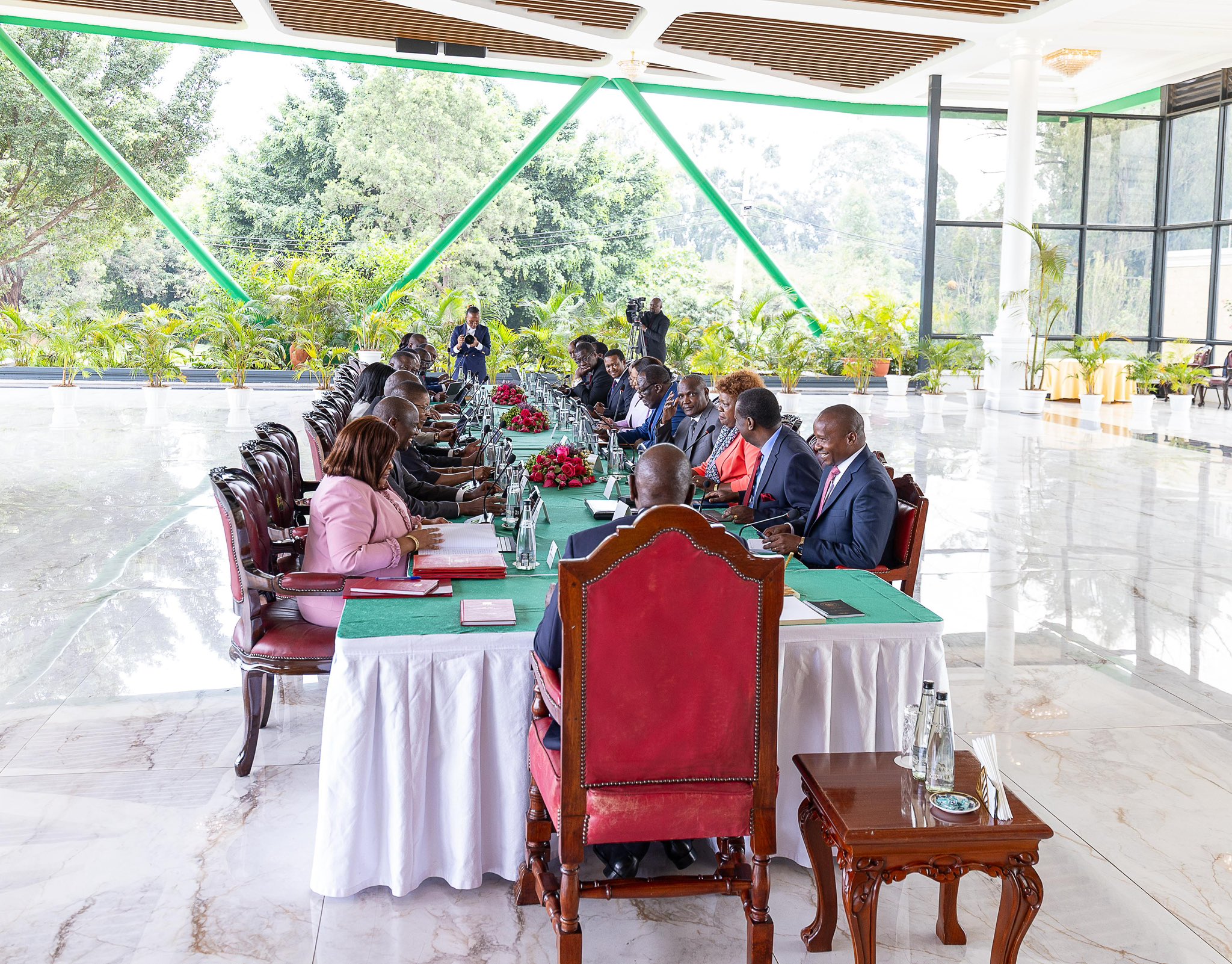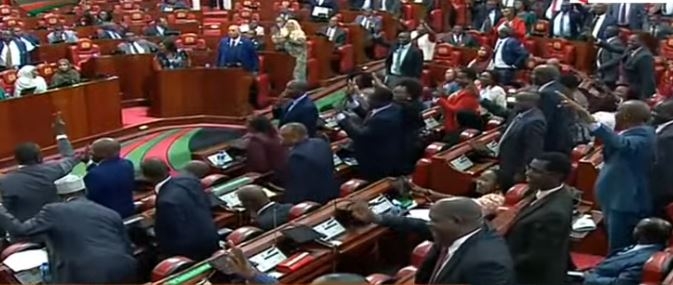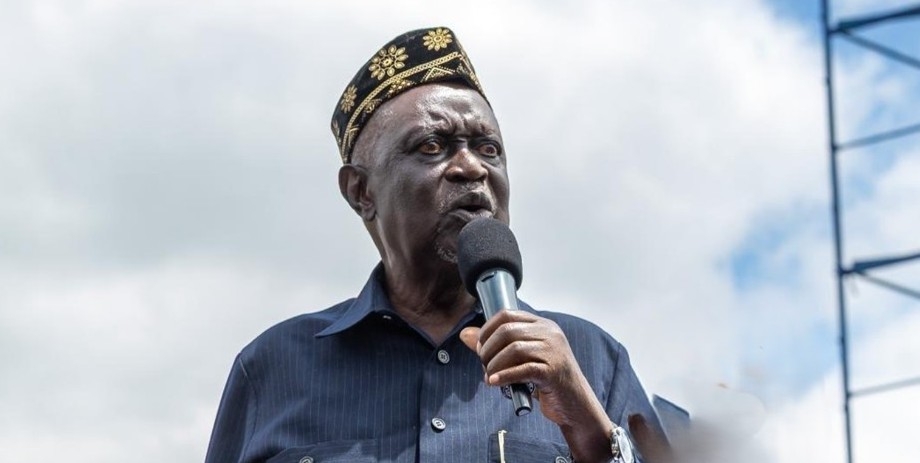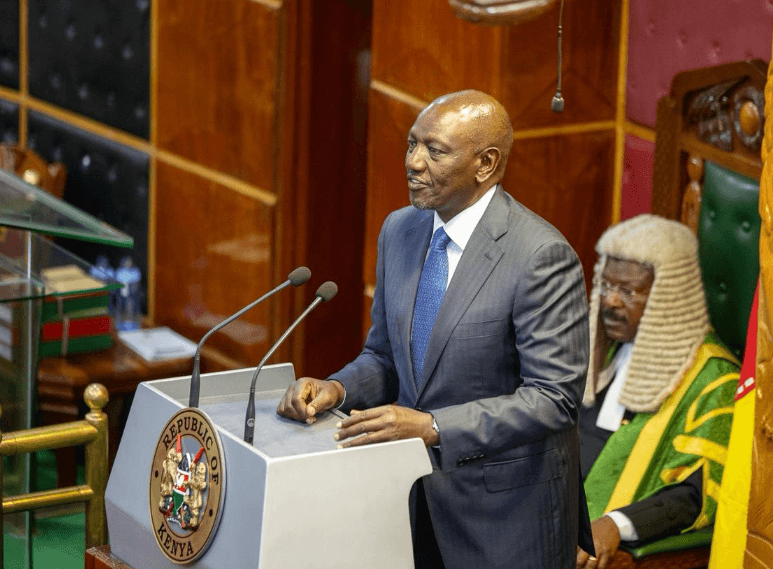
 President William Ruto on Tuesday chaired a Cabinet meeting at State House, Nairobi, July 29, 2025. /PCS
President William Ruto on Tuesday chaired a Cabinet meeting at State House, Nairobi, July 29, 2025. /PCS
President William Ruto on Tuesday chaired a Cabinet meeting at State House, Nairobi, where among the key resolutions passed were measures to address mounting pending bills in the roads sector.
In a significant policy shift, the Cabinet approved measures aimed at accelerating payments to contractors through the continued use of a financing mechanism based on the securitisation of the Road Maintenance Levy Fund (RMLF).
The move is expected to inject fresh momentum into road infrastructure development, ease contractor cash flow constraints and revive stalled projects.
According to a Cabinet dispatch, Sh64.2 billion has already been released through this model, which has so far cleared 40 per cent of verified claims relating to 575 contracts covering 393 projects.
In a further effort to reduce arrears, the Cabinet approved an additional disbursement of up to 40 per cent, raising the total settlement to 80 per cent of verified amounts.
The payout will, however, be conditional on contractors agreeing to extend the final payment period by another 120 days.
“These measures have resolved long-standing financial obligations, unlocked stalled projects, improved contractor cash flow, and ensured continuity in infrastructure development nationwide,” the Cabinet statement read.
A recent audit commissioned by the National Treasury found that of the Sh665 billion in pending bills across government, only about Sh230 billion had been verified as legitimate.
In the roads sector alone, contractors were owed over Sh160 billion, according to data tabled by the then Roads Cabinet Secretary Kipchumba Murkomen showed.
The Cabinet reaffirmed its commitment to ensuring that infrastructure development is not disrupted by legacy financial obligations.
However, the decision is likely to face fresh legal scrutiny, building on a previous court order freezing the disbursement of Sh10.5 billion from the RMLF over the alleged exclusion of county governments in the financing model.
The securitisation approach, which was first implemented in early 2024, allows the government to leverage future fuel levy revenues by converting them into tradeable bonds.
These bonds are sold to investors, providing upfront capital to pay contractors without relying on direct exchequer allocations or additional borrowing.
The Kenya Roads Board, which administers the RMLF, estimates that up to Sh175 billion could be raised through this model.
While the government has touted the approach as an innovative solution to cash flow problems in infrastructure delivery, concerns have been raised by financial experts and development partners.
The International Monetary Fund (IMF) has flagged the model for lacking transparency and circumventing standard public debt reporting processes.
Critics like Kiharu MP Ndindi Nyoro argue that by bypassing parliamentary oversight, the scheme may set a worrying precedent for future fiscal management.
















![[PHOTOS] Betty Bayo laid to rest in Kiambu](/_next/image?url=https%3A%2F%2Fcdn.radioafrica.digital%2Fimage%2F2025%2F11%2F3b166e2e-d964-4503-8096-6b954dee1bd0.jpg&w=3840&q=100)

